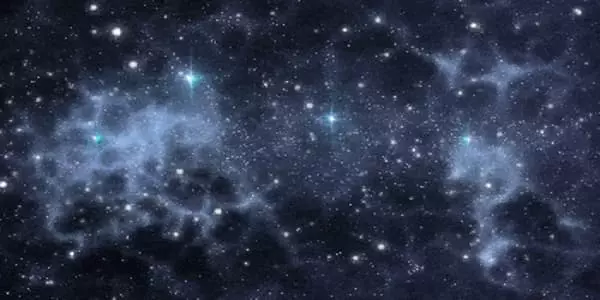Researchers in the dark matter community are beginning to question whether they are looking for the right kind of dark matter. They have proposed a new method for searching for particles that could be dark matter by repurposing existing tabletop sensor technology.
Dark matter, according to scientists, exists. Despite this, they still have no direct evidence for the mysterious substance after more than 50 years of searching. Swati Singh of the University of Delaware is one of a small group of dark matter researchers who has begun to wonder if they are looking for the right kind of dark matter.
“What if dark matter is much lighter than what traditional particle physics experiments seek?” asked Singh, an assistant professor of electrical and computer engineering at UD. Now, Singh, Jack Manley, a UD doctoral student, and collaborators from the University of Arizona and Haverford College have proposed a new method for searching for the particles that could make up the dark matter by repurposing existing tabletop sensor technology. The team recently published a paper in Physical Review Letters detailing their approach.
Dark matter exists. What if dark matter is much lighter than what traditional particle physics experiments seek? It could be made up of black holes, or it could be made up of ultralight dark matter, which is trillions of times smaller than an electron.
Singh, a quantum theorist
No ordinary matter
Singh explained that when all the things that emit light, such as stars, planets, and interstellar gas, are added together, they only account for about 15% of the matter in the Universe. The remaining 85 percent is referred to as dark matter. It doesn’t emit light, but researchers can tell it’s there because of its gravitational effects. They are also aware that it is not ordinary matter, such as gas, dust, stars, planets, or us.
“It could be made up of black holes, or it could be made up of ultralight dark matter, which is trillions of times smaller than an electron,” said Singh, a quantum theorist known for her pioneering efforts to advance mechanical dark matter detection.
One possibility is that dark matter is made up of dark photons, a type of dark matter that would exert a weak oscillating force on normal matter, causing a particle to move back and forth. However, because dark matter is everywhere, it exerts that force on everything, making it difficult to measure this movement.
Singh and her colleagues believe they can overcome this challenge by using optomechanical accelerometers as sensors to detect and amplify the oscillation. “If the force is material dependent, then using two objects made of different materials, the amount that they are forced will be different, allowing you to measure the difference in acceleration between the two materials,” said Manley, the paper’s lead author.
Wilson, a quantum experimentalist and collaborator on the UD team, compared an optomechanical accelerometer to a miniature tuning fork. “It’s a vibrating device that, due to its small size, is very sensitive to environmental perturbations,” he explained.
The researchers have now proposed an experiment that uses a silicon nitride membrane and a fixed beryllium mirror to bounce light between the two surfaces. Because silicon nitride and beryllium have different material properties, the researchers would be able to tell if dark photons were present based on the reflected light if the distance between the two materials changed.

According to Manley, collaboration was essential in developing the experiment’s design. He and Singh (theorists) collaborated with Wilson and Dey Chowdhury (experimentalists) on the theoretical calculations that informed the detailed blueprint for their proposed tabletop accelerometer sensor. Meanwhile, cosmologist Grin contributed to the understanding of the particle physics aspects of ultralight dark matter, such as why it would be ultralight, why it might couple to materials differently, and how it might be produced.
As a theorist, Manley stated that the opportunity to learn more about how devices work and how experimentalists build things to prove the theories that he and Singh develop has deepened his expertise while also broadening his exposure to potential career paths.
A growing body of work
Importantly, this latest work expands on previously published research by the collaborating teams, which was published in Physical Review Letters last summer. The paper, which included contributions from former UD graduate student Russell Stump, demonstrated that several existing and near-term laboratory-scale devices are sensitive enough to detect or rule out ultralight dark matter particles.
According to the findings, certain types of ultralight dark matter would connect, or couple, with normal matter in such a way that the size of atoms would change on a regular basis. While small fluctuations in the size of a single atom may be difficult to detect, the effect is amplified in an object made up of many atoms, and further amplification is possible if the object is an acoustic resonator. The researchers tested the performance of several resonators made of various materials, ranging from superfluid helium to single-crystalline sapphire, and discovered that these sensors can detect the dark matter-induced strain signal.
Both projects were funded in part by Singh’s National Science Foundation grant to investigate emerging ideas about using cutting-edge quantum devices to detect astrophysical phenomena with tabletop technologies that are smaller and less expensive than other methods.
These papers, according to Singh, add to the body of work on what is known about possible ways to detect dark matter and hint at the possibility of a new generation of table-top experiments.
Singh and Manley are also collaborating with other experimental groups to create additional tabletop sensors to search for dark matter or other weak astrophysical signals. They are also actively fostering broader discussions about this topic within the dark matter and quantum sensor communities.
For example, Singh recently spoke at a virtual workshop organized by the Department of Energy’s Coordinating Panel for Advanced Detectors about transformational instrumentation advances in particle physics detectors (CPAD). She also presented these findings at a special workshop held during the American Physical Society’s annual meeting in April.
“It’s an exciting time, and I’m learning a lot from the questions posed by scientists from various backgrounds at these workshops,” Singh said. “However, it’s worth noting that my most original research ideas still stem from questions posed by inquisitive students.”














